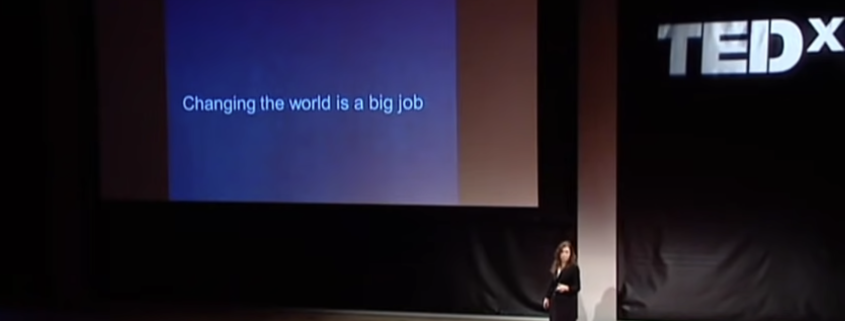The secret structure to great talks | Nancy Duarte
In this fascinating talk Nancy Durate breaks down some of the most iconic speeches in history to show a pattern, shape and structure that we can apply to our own speeches and presentations.
Nancy is hugely passionate about presentations and the value that they can have.
The world has been and still can be changed through powerful and meaningful presentations.
And just like Chris Anderson’s talk, all presentations and talks h ave to start with an idea.
“The idea has got to be spread, or it won’t be effective. So it has to come out of you and out into the open for people to see. And the way that ideas are conveyed the most effectively is through story.”
A story with the correct structure can be easily consumed and remembered by the listener.
The big question that Nancy asked was; how do you incorporate stories into presentations?
She then goes on to break down structures of stores:
- A beginning, middle and end
- A likeable hero
- A desire
- A roadblock
- Overcoming to emerge transformed
What I like is that Nancy highlights that in a presentation or speech, the speaker is not the hero in the story.
If we truly want the audience to engage and have the emotional response we want them to have, the audience have to be the hero, the speaker has to be the mentor.
To present our ideas with the biggest impact, we need the audience to believe that they are the heroes in our story, we create a desire from them through our idea.
Then we bring in the roadblock through creating curiosity, making the audience want to know how they can overcome the roadblock.
And that’s when our idea gives them the transformation in how they think, behave or act.
But to have this impact, Nancy has created a shape which we can all fit our presentations and speeches into so that we can have the desired impact when we tell our stories and share our ideas.
The shape identifies that there are 2 main features
- What is
- What could be
To break this down further, Nancy explains; “At the beginning of any presentation, you need to establish what is… And then you need to compare that to what could be.”
She goes on to explain that there needs to be a back and forth between the ‘what is’ and the ‘what could be’ to highlight the idea even greater.
Using another tip from Chris Anderson, Nancy goes on to use a sailing metaphor to highlight how her structure works when encountering resistance to your idea.
By working with the resistance in the ‘what is’ and ‘what could be’, just like a sailing boat using the wind to generate more power, the structure helps the presenter pull people towards their idea.
And finally, after the back and forth of using stories, analogies, metaphors to highlight to the audience the ‘what is’ and then the ‘what could be’, the speech or presentation ends with the call to action which should leave the audience transformed.
Nancy goes on to show how she uses this shape as an analysis tool for famous speeches like Steve Jobs and the iPhone launch and the iconic Dr Martin Luther King ‘I Have a Dream’ speech.
I’ve used this talk so many times to work on my own public speaking skills which is why I’ve put it on my Top 5 TED Talks to improve public speaking.



